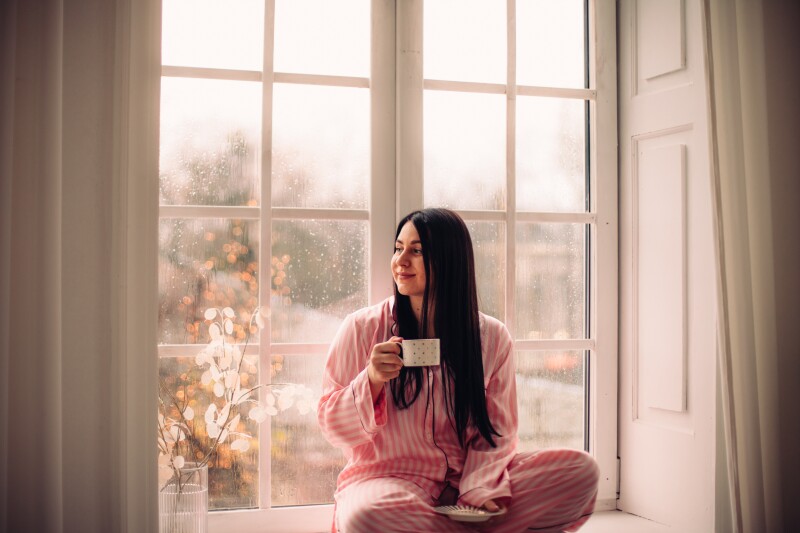Whew — it’s been a year. In 2024, the American Psychiatric Association’s annual mental health poll found that 43% of surveyed adults felt more anxious than they did last year, a number that his risen year over year.
Stress, and sleep are the most-cited issues affecting mental health.
This this — and many reasons — the end of daylight saving time, when we traditionally “fall back” should be a gift. That’s because nearly all Americans (save for Hawaii and most of Arizona) are given an extra hour in our day.
Here are 12 healthy and creative ways to spend the extra hour when we "fall back" at the end of daylight saving time. Each suggestion is geared toward relaxation, productivity, or improving sleep quality:
What is daylight saving time?
Daylight saving time (DST) is the practice of adjusting the clocks to maximize later sunlight. This means that we turn the clocks ahead in the spring ("spring forward") and then back in the fall ("fall back") to make the most of natural daylight during warmer months of the year.
Nearly every state in the United States observes daylight saving time—with the exception of Arizona (save for the Navajo Nation) and Hawaii. Puerto Rico and the US Virgin Islands also do not observe DST.
When is daylight saving in the US?
Spring forward: Daylight saving in the US starts on the second Sunday in March at 2 a.m., local time. This is when we set our clocks forward one hour or losing an hour. During this time, it stays light later into the evenings.
Fall back: Daylight saving time ends on the first Sunday in November at 2 a.m. This is when we set our clocks back one hour, gaining an hour.
To remember when and how to adjust their clocks, many people use the phrases, “Spring forward,” and “Fall back.”
It’s time now to fall back, so what are we all planning to do with that extra hour?
Fall back plans: How to spend your extra hour
You could linger in bed for a bit of extra time. After all, many people suffer from social jetlag on weekends. But if you'd like the make the most of your time, here are a few ways to spend your extra hour:
- Read a book. Don't doomscroll your hour away. Reading a book can relax you and leave you in a better headspace for the week ahead. A 2009 study by Mindlab at University of Sussex found that reading can reduce stress by up to 68%.
 Diving into a good book is one of the healthiest forms of escapism.Photo Credit: Unsplash
Diving into a good book is one of the healthiest forms of escapism.Photo Credit: Unsplash - Listen to music. You already know music can help you fall asleep faster — especially these seven songs — but did you also know it can have a therapeutic effect? Research shows music can improve sleep quality. It can also boost your brainpower, relieve stress, and make you feel more happy, energetic, and alert. The key is to pick music that moves you.
- Research the issues and fill out your ballot. If this important action item has been taunting you from your to-do list, now’s the time to act! Depending on where you live your ballot will be due on or before Tuesday, November 5. Visit usa.gov to learn how, where, and when to vote where you live.
- Move your body. Regular exercise isn’t just good for your heart and your mood, there’s also solid evidence it can help you achieve optimal sleep quality. If you're looking for ideas of how to exercise, try these seven ideas for exercise to help you sleep better. If you have kids, get them in on the fun with some Cosmic Kids Yoga.
- Get crafty. Getting busy with your hands doesn't just take your mind off your troubles, it can seriously improve your mood. A recent study published in Frontiers in Public Health found that adults who engage in arts and crafts reported feeling happier, with improved life satisfaction. So grab some paintbrushes, dust off your knitting needles, or get outside and write for a bit. Bonus points if you give whatever you make to someone else, brightening their day as well.
- Cuddle up! No need to use that extra hour as a weekend warrior. Stay in bed and cuddle for a bit. Whether your favorite cuddle partner is a pet or a partner, studies find that bonding can improve mental health and let you sleep more deeply.
- Go for a walk outdoors. Fall is a prime time for hiking, but you don’t have to head to the mountains to reap the rewards of time spent outside. Whether you'd like to go forest-bathing or simply walk in your neighborhood, time outside can be grounding and even a source of walking meditation to reduce stress and help you collect your thoughts for the week ahead.
 When it comes to good-for-you COVID-friendly activities, it's hard to beat hiking—especially in the fall.Photo Credit: Unsplash
When it comes to good-for-you COVID-friendly activities, it's hard to beat hiking—especially in the fall.Photo Credit: Unsplash - Meditate. From pain relief to better immune function to, yes, improved sleep, the laundry list of things meditation can aid continues to grow. Best of all, even bite-size sessions appear to help. Never meditated before? No problem. See our rundown of the four best meditation apps.
- Embrace fall. Fall is arguably the best time of year to get outside. Whether you choose to go leaf-peeping, pick some apples or simply tackle some yardwork, fall activities can help you get better sleep.
 Woman holding decorative orange pumpkins for autumn decorations. Fall festive picture.Moment RF / Getty Images
Woman holding decorative orange pumpkins for autumn decorations. Fall festive picture.Moment RF / Getty Images - Create a sleep sanctuary. You’d be surprised how much you can improve your bedroom in just an hour. Rather than wait for spring cleaning, declutter your sleep space now and embrace calming colors, help your space get cool, dark, and quiet, or add a few autumnal touches.
- Get some rest. Why not get an extra 60 minutes of sleep? While maintaining a consistent sleep schedule is one of the most important pillars of good sleep hygiene, there’s nothing wrong with taking a power nap. Here’s how to do it right. Or just lay down and rest with your eyes closed.
- Meal prep. Rather than engage in the same mid-week fridge foraging of every other week, spend your hour at a local farmers' market or prepping in your own kitchen. These recipes are easy and sleep-promoting, so your Wednesday self will thank you.
No matter how you spend your bonus hour, aim to give yourself a chance to unwind. It will set you up for a successful season or two — until you lose that hour again.






